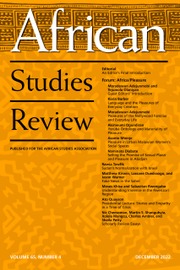In his book, William J. Spurlin investigates the work of contemporary queer writers originally from the Maghreb but writing from France: Nina Bouraoui (French Algerian), Rachid O. (French-Moroccan), Eyet-Chékib Djaziri (French-Turkish-Tunisian), and Abdellah Taïa (French-Moroccan). He engages postcolonial literary studies and queer theories to examine how the authors negotiate both histories of the Ottoman Empire and French colonization and contemporary realities in North Africa and France. These authors use autofiction to examine their hybrid identities from a place of liminality as queer migrants (5). This tactic allows them to “think themselves out of the fixed hierarchies of colonial legacies,” and it provides the writers “a mode for the narrative reframing of narrow cultural nationalist readings around race, gender, sexuality, and belonging” (20–21). Thus, the layered study seeks to “exploit the queer potential of the liminal zones between borders” (30), as it demonstrates how the four authors write as a method toward “self-understanding” (6).
The analysis of the autofiction supports a deeper understanding of the whole of the work of each author. Bouraoui, for example, writes herself into Le garçon manqué (The Tomboy), Poupée bella (Bella Doll), and Mes mauvaises pensées (My Bad Thoughts), as she failed to live as a girl according to Algerian social constructs, but also did not fit into lesbian identity and culture in France as an Arab. For his part, Djaziri investigates how the dual perceptions of passive and active roles in male-male relations are complicated between Tunisian and French contexts in Un poisson sur la balançoire (A Fish on the See-Saw) and Une promesse de douleur et de sang (A Promise of Pain and Blood).
For readers familiar with queer studies, the book adds to the field by connecting the theories of well-known queer theorists like Heather Love, Judith Butler, Gibson Ncube, and José Esteban Muñoz to texts that would normally not be examined in this manner, such as Taïa’s Une mélancolie arabe (An Arab Melancholy), and Rachid O.’s books: L’enfant ébloui (The Sparkling Child), Plusieures vies (Many Lives), Chocolat Chaud (Hot Chocolate), and Ce qui reste (What Remains). Spurlin also offers a survey of the field of queer studies in the Global South to further serve as an additional backdrop for the works discussed so that the readings of the texts are always appreciated as new “sites of decolonized queerness” (22), at the intersectionality of North African and queer studies, and are distinguished from queer literary texts from Western Europe or the United States.
Students and scholars interested in Francophone North African literature will find this work a welcome addition to the heteronormative works that largely dominate the field. Through his analyses, Spurlin shows how these writers break from strictly Maghrebian-centered writing, while speaking as part of and yet partially apart from French-based writership. Here, they are able to claim their own queer migrant space to write from. Spurlin actually equates the entre-deux (in-between) space occupied by writers of African descent living in France to a queer space, thus drawing the disparate fields of analysis together. Further, he emphasizes the transcultural translation at stake to underline the false border between languages, as well, demonstrating how the writers alter the French language by injecting Arabic influences, thus rendering it specifically reflective over their own methods of expression. For a reader fluent in French, the close text examinations exemplify Spurlin’s points; however, readers who do not read French will have to reference the notes at the end of each chapter to locate translations.
Spurlin paints the writing examined as a literature of combat, agitating against what he calls “contested borders,” as the title indicates—between nation states, between languages, cultures, and sexual and gender identities. However, it is unclear whether any of the authors see themselves as writing from political or otherwise combative stances as much as they seem to write for self-discovery. One might argue that Spurlin demonstrates how the writers discussed are effectively blurring, or queering borders, rather than contesting them. In this regard, Spurlin pushes against the binaries of culture and language by emphasizing fluidity over binaries of gender and sexuality. Because he relies so much on theory for his analyses, the author spends the first two chapters laying out these theoretical approaches, and the third chapter provides the historical literary background from the Maghreb. Therefore, he does not arrive at the heart of his study until the fourth and fifth chapters.
Nevertheless, the book effectively illustrates the prowess of these writers who do not fit into national identities or Western sexual identities as they use their autofiction for self-discovery. In this regard, the book offers a welcome look at queer migrant perspectives from France, which feels incredibly important given the political realities and colonialist history of France. Due to the continued Other-ing of migrants and neonationalist rhetoric across the globe, books like this which draw into question any and all identity definitions are useful in pushing humanity towards new conceptions that, indeed, blur boundaries.

